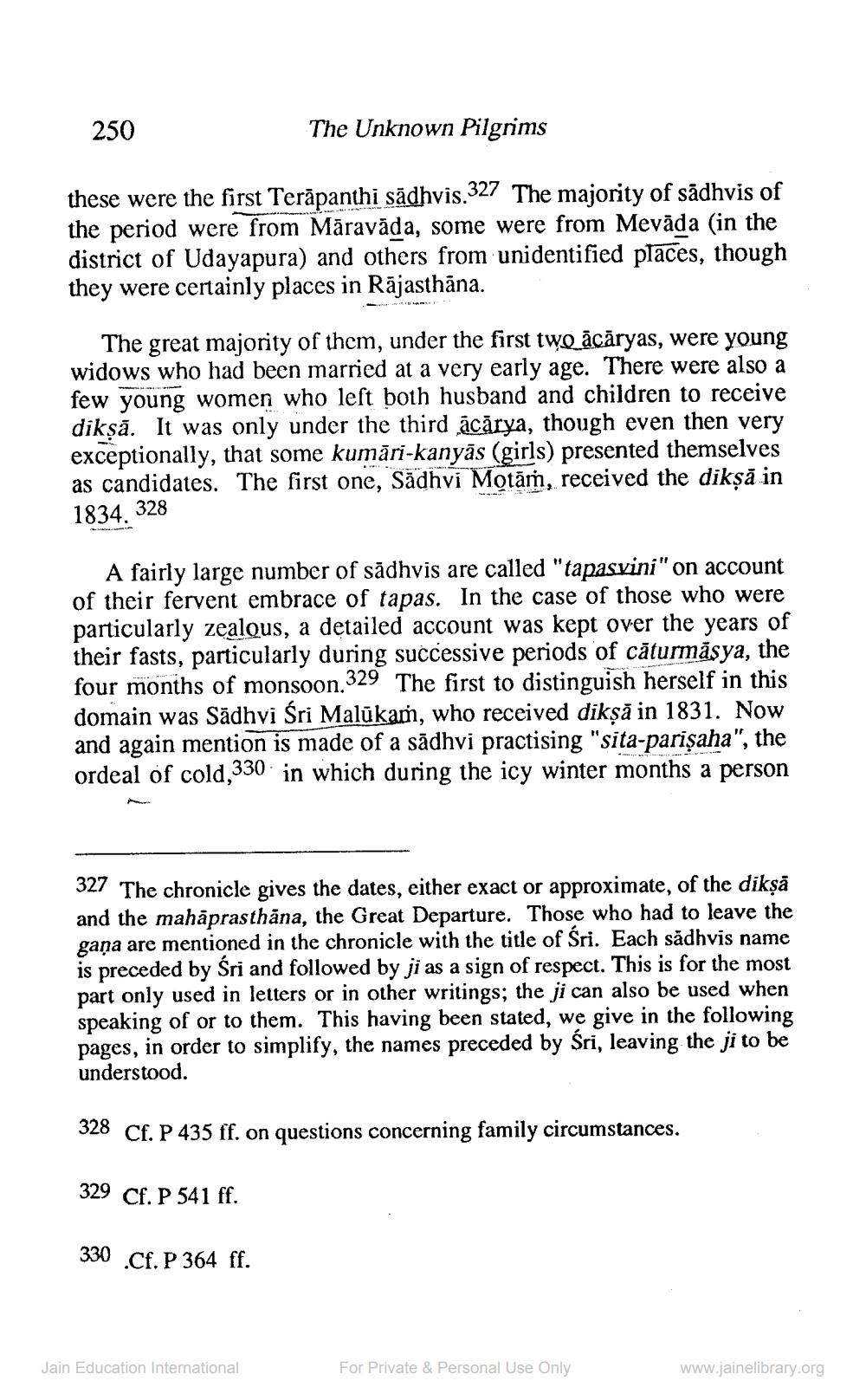________________
250
The Unknown Pilgrims
these were the first Terāpanthi sādhvis 327 The majority of sadhvis of the period were from Māravāda, some were from Mevāda (in the district of Udayapura) and others from unidentified places, though they were certainly places in Rājasthāna.
The great majority of them, under the first two ācāryas, were young widows who had been married at a very early age. There were also a few young women who left both husband and children to receive dikṣā. It was only under the third ācārya, though even then very exceptionally, that some kumāri-kanyās (girls) presented themselves as candidates. The first one, Sãdhvi Motām, received the dikşā in
1834. 328
A fairly large number of sādhvis are called "tapasvini" on account of their fervent embrace of tapas. In the case of those who were particularly zealous, a detailed account was kept over the years of their fasts, particularly during successive periods of căturmāsya, the four months of monsoon.329 The first to distinguish herself in this domain was Sãdhvi Śri Malūkam, who received dikṣā in 1831. Now and again mention is made of a sādhvi practising "sita-parişaha", the ordeal of cold,330 in which during the icy winter months a person
327 The chronicle gives the dates, either exact or approximate, of the dikşă and the mahāprasthāna, the Great Departure. Those who had to leave the gana are mentioned in the chronicle with the title of Sri. Each sådhvis name is preceded by Sri and followed by ji as a sign of respect. This is for the most part only used in letters or in other writings; the ji can also be used when speaking of or to them. This having been stated, we give in the following pages, in order to simplify, the names preceded by Sri, leaving the ji to be understood.
328 Cf. P 435 ff. on questions concerning family circumstances.
329 Cf. P 541 ff.
330 .Cf. P 364 ff.
Jain Education International
For Private & Personal Use Only
www.jainelibrary.org




